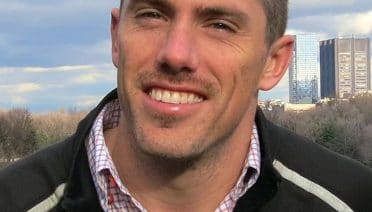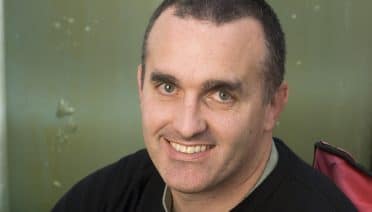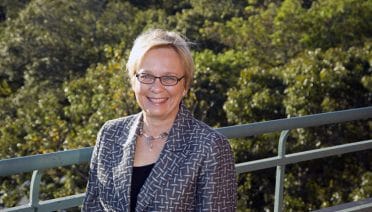Press Room
Woods Hole Oceanographic Institution (WHOI) has teamed up with the public to build the most comprehensive and up-to-date dataset on marine radiation levels in the aftermath of the 2011 Fukushima Dai-ichi Nuclear Power Plant disaster. With no U.S. government or…
Scientists have been keeping a close eye on how radionuclides from the Japanese power plant are being transported in the Pacific Ocean since the Fukushima Dai-ichi Nuclear Power Plant accident in March 2011. Now, three scientists are taking a closer…
Woods Hole Oceanographic Institution (WHOI) scientist Kristopher Karnauskas has been selected to receive a 2014 Sloan Research Fellowship. Awarded annually since 1955, the fellowships are given to early-career scientists and scholars whose achievements and potential identify them as rising stars—the…
While countries such as Japan, Norway, and Iceland often are criticized for their commercial whaling practices, Woods Hole Oceanographic Institution (WHOI) marine biologist Michael Moore points out how the majority of nations are also complicit in killing whales by deploying…
For four decades, waste from nearby manufacturing plants flowed into the waters of New Bedford Harbor—an 18,000-acre estuary and busy seaport. The harbor, which is contaminated with polychlorinated biphenyls (PCBs) and heavy metals, is one of the EPA’s largest Superfund…
Over the past two decades, ice loss from the Greenland Ice Sheet increased four-fold contributing to one-quarter of global sea level rise. However, the chain of events and physical processes that contributed to it has remained elusive. One likely trigger…
With concern among the public over the plume of radioactive ocean water from Fukushima arriving on the West Coast of North America and no U.S. government or international plan to monitor it, a new project from Woods Hole Oceanographic Institution…
After a three-year overhaul and major upgrade, the United States’ deepest-diving research submersible, Alvin, has been cleared to return to work exploring the ocean’s depths.
Ocean researchers working on the coral reefs of Palau in 2011 and 2012 made two unexpected discoveries that could provide insight into corals’ resistance and resilience to ocean acidification and to aid in the creation of a plan to protect them.
Woods Hole Oceanographic Institution (WHOI) marine chemist Ken Buesseler began sampling and analyzing seawater surrounding the Fukushima Dai-ichi nuclear power plant three months after the 2011 disaster. Today, he launched a crowd sourcing campaign and citizen science website to collect…
The Paul G. Allen Family Foundation has awarded Woods Hole Oceanographic Institution (WHOI) assistant scientist Anna Michel $200,000 to develop a sensor that will enable scientists to analyze how methane emissions fluctuate in the Arctic. Methane is a greenhouse gas…
Great white sharks—top predators throughout the world’s ocean—grow much slower and live significantly longer than previously thought, according to a new study led by the Woods Hole Oceanographic Institution (WHOI). In the first successful radiocarbon age validation study for adult white sharks, researchers analyzed vertebrae from four females and four males from the northwestern Atlantic Ocean. Age estimates were up to 73 years old for the largest male and 40 years old for the largest female.
Scientists and engineers using advanced technology and a unique robotic vehicle to study the deep sea will also be using their computers to interact with students, teachers, and the public about the research they are conducting.
Equipped with high-speed, high-resolution video, scientists have discovered important new information on how marine snail larvae swim, a key behavior that determines individual dispersal and ultimately, survival. Researchers from the Woods Hole Oceanographic Institution (WHOI) and Stony Brook University grew…
Marine geochemist Chris Reddy has been selected to receive the 2014 Clair C. Patterson Award from the Geochemical Society for his analytical and scientific contributions to organic geochemistry. The C.C. Patterson Award recognizes one scientist a year who has led…
WHOI Senior Scientist Susan Humphris has been elected a 2013 Fellow of the American Geophysical Union (AGU). A committee of Fellows recognizes her “sustained and exemplary contributions to our understanding of volcanic and hydrothermal processes at mid-oceanic ridges.” Humphris is…
Millions of people across the world live or depend on deltas for their livelihoods. Formed at the lowest part of a river where its water flow slows and spreads into the sea, deltas are sediment-rich, biodiverse areas, a valuable source…
The Woods Hole Oceanographic Institution (WHOI) will host a talk by author Dallas Murphy and videographer Ben Harden on Friday, December 13, about the new book To The Denmark Strait, which features a firsthand account of a modern oceanographic adventure. The talk will begin at noon in Redfield Auditorium, located at 45 Water Street, Woods Hole, Ma.
Schmidt Ocean Institute (SOI) has begun working with the Deep Submergence Laboratory at the Woods Hole Oceanographic Institution (WHOI) to design and build the world’s most advanced robotic undersea research vehicle for use on SOI’s ship Falkor. The new vehicle will be capable of operating in the deepest known trenches on the planet, including the nearly 11,000-meter-deep Challenger Deep in the Mariana Trench. The design will capitalize on lessons learned from past WHOI vehicle designs, as well as advanced technologies developed for DEEPSEA CHALLENGER, the submersible and science platform that explorer and director James Cameron piloted to Challenger Deep in 2012 and donated to WHOI in 2013.
Dr. Susan Avery, president and director of Woods Hole Oceanographic Institution (WHOI), has been appointed to a Scientific Advisory Board announced by the UN Secretary-General, Ban Ki-moon.




